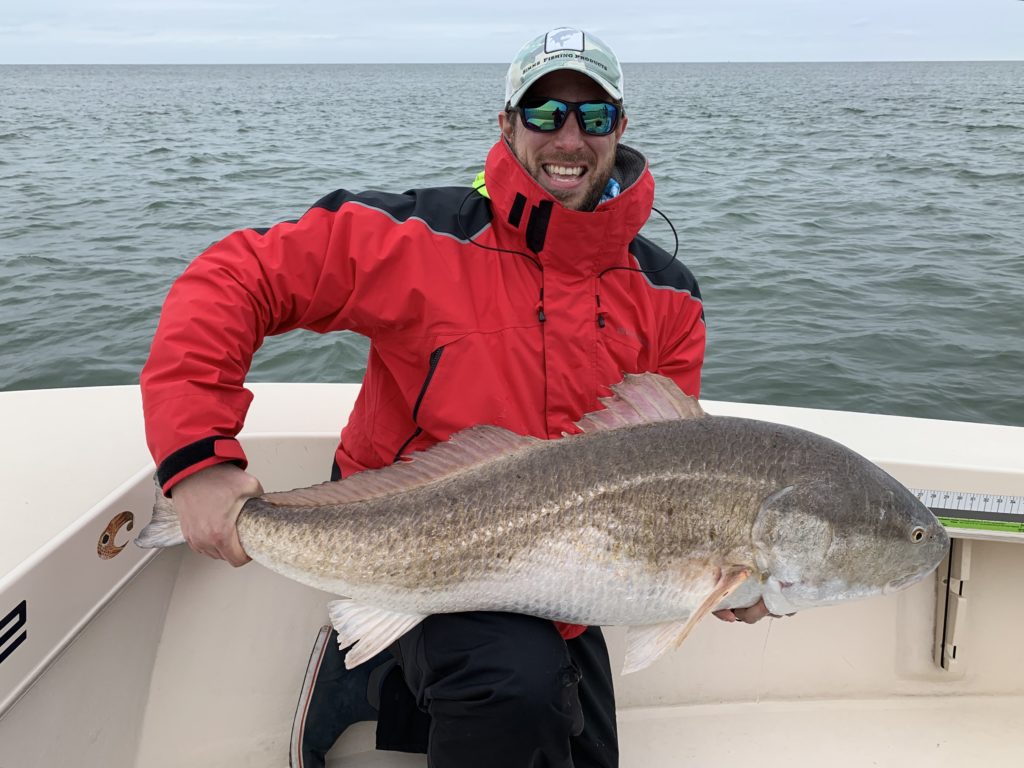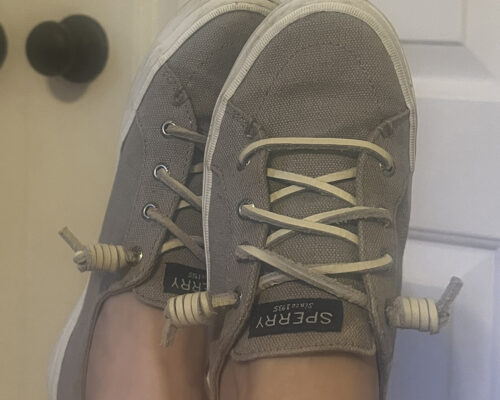Spring comes inexorably but slowly from March into April. Early spawners like hickory shad make their way up the Chesapeake’s rivers, and rockfish stage near their spawning grounds. Crabs wake from their slumber and slowly begin to forage. From mid-April into May, though, the lower Chesapeake explodes not just with spawners but also with eaters. One of the most remarkable groups of eaters to emerge over the past 20 years is the big “bull” redfish, which comes into our waters from their wintering grounds on the continental shelf off North Carolina. Also known as red drum, these amazing creatures can grow to a length of 40 to 55 inches.
For four weeks or so, shallow flats with southeast exposure along the seaside beaches just outside both Virginia capes and along the Bay’s lower western shore from Hampton all the way up to the Rappahannock offer these fish two resources they need: warm water to raise their body temperatures and abundant food to stoke their rising metabolisms. Powerfully built with broad tails, heavy shoulders, underslung mouths and crusher plates in their throats, these drum are well equipped as opportunistic predators with keen appetites for fish, mollusks and crustaceans.
Those miles and miles of flats provide sandy bottoms with clams and, especially at this season, eelgrass beds crawling with crabs getting ready to slough their shells for the first time this year. That’s right: like their cousins the speckled trout, these big red drum are coming into the Bay for the “Peeler Run.” They’ll root up anything they find in the sand and grass (including even sand dollars, according to one veteran of the fishery), but rank (ripe) peelers and fresh soft crabs are their haute cuisine.
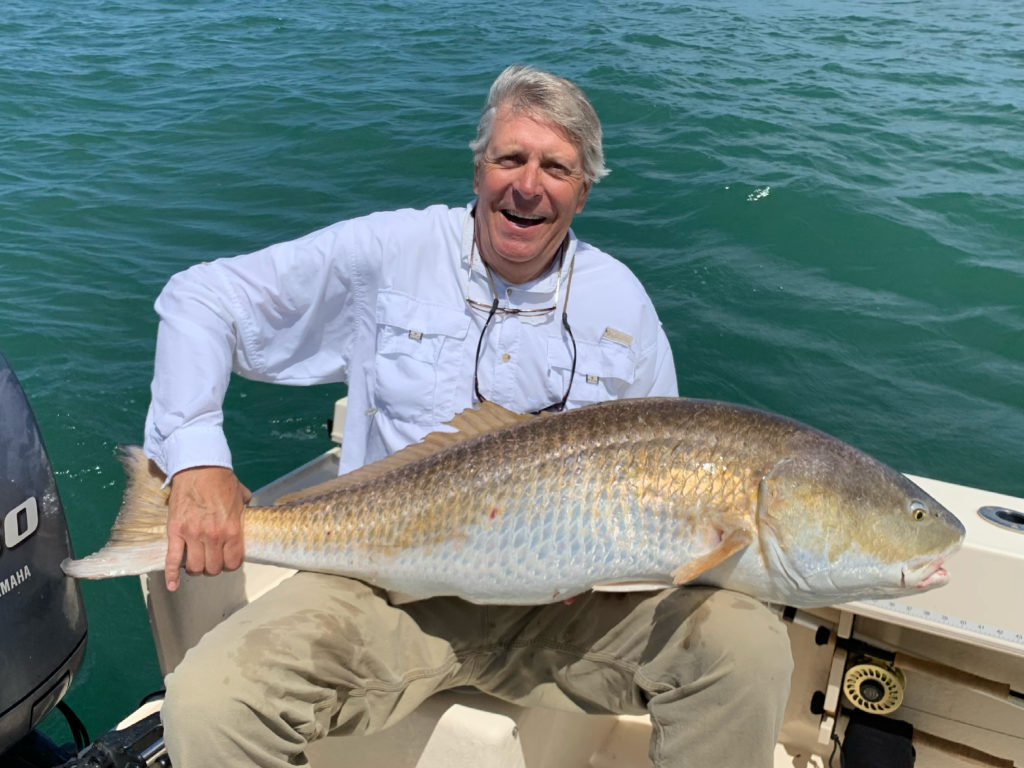
Photo by Kevin Josenhans
This bonanza comes as water temperatures at the Bay’s mouth reach 60 degrees. According to NOAA’s First Landing Buoy, that event comes around April 30, plus-or-minus 10 days. It will last about four weeks, according to past history, as reflected in the Red Drum Citations awarded by the Virginia Saltwater Fishing Tournament. After that, the drum begin to disperse to summertime haunts all over the Bay. Savvy anglers plan accordingly, reserving time and trying to remain flexible around both the rate at which the water warms and the fickle spring weather on these broad and sometimes treacherous seas.
Finding the fish, as always, is a blend of art, science and technology. Homework ahead of time is the first order of business, informed by an understanding of what the fish need, chart study, and thoughtful research on anglers’ success in past seasons. Discussion within a close-mouthed network of like-minded friends is always valuable, too. Once on the water, the distinctive bronze-colored water the schools create, “pushes” of water as the big fish move shallow together, trails of suspended sand as the fish root in the bottom, and even a watermelon smell hanging over a school (according to one prominent angler). In the last few years, anglers with a bent for gear have begun to rely on side-scan sonar, which returns strong signals from the drums’ big air bladders, and elevated towers on large skiffs for better spotting of schools.
That said, one of the most experienced groups of anglers is the kayakers, some of the best of whom eschew sonar but delight in capturing their drum encounters on rollicking videos, often shot with cameras mounted on each end of the vessels. The most prominent member of this crew is “Kayak Kevin” Whitely, an animated, versatile Master Angler who became the first to achieve that rating from the Virginia Saltwater Fishing Tournament while fishing solely in kayaks. Subscribe to his YouTube page to watch short videos of the full range of his fish obsession, from Appomattox River smallmouths to springtime red drum. He loves to be next to the water, and the stealth of his little boat allows him to get close to the fish.
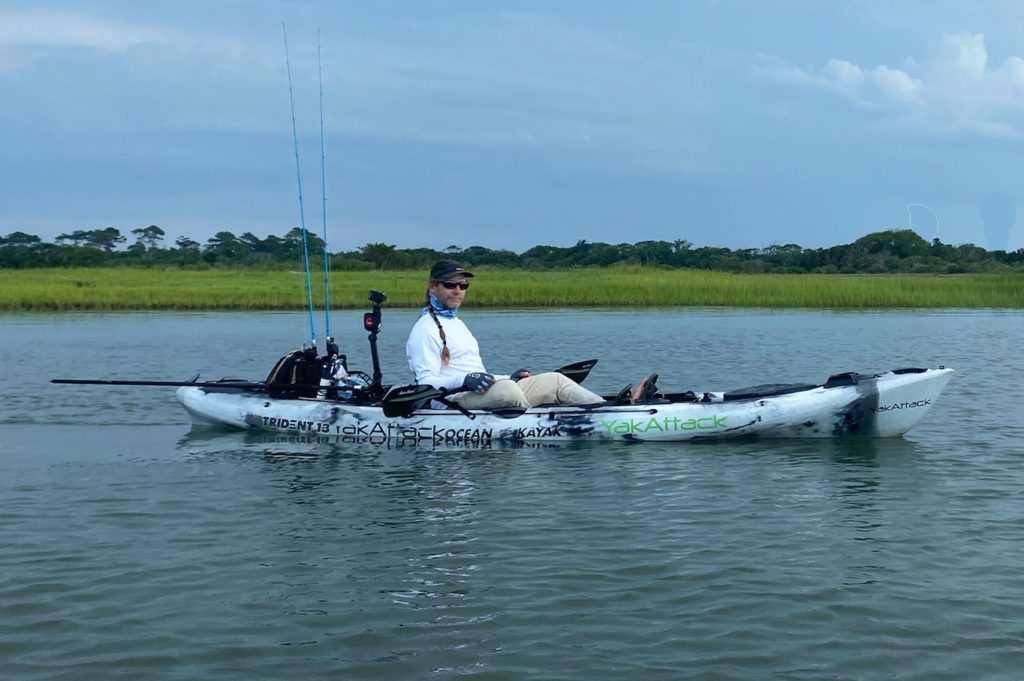
Photo by Ric Burnley
The videos show how he and his friends handle big drum, casting and sometimes paddle-trolling on the flats with stout-hooked jigs carrying large soft plastic shad tails or setting cut baits (whole peeler or hard crabs) on circle hook fishfinder rigs in the adjacent sloughs. They employ 6-foot-6-inch, heavy-action muskie rods mounting strong baitcasting reels spooled with 65-pound-test braided line and 80-pound-test leaders. Note, by the way, that this is no game for a novice paddler. The water is big, and the currents are decidedly more powerful than the fish. That said, the thrill lies in the “Kayak Sleigh Ride” as a big drum tows the craft and angler at speeds emulating whitewater rapids.
The effort of fighting heavy tackle and the sleigh ride towing ensure a short fight without completely exhausting the fish, which is important because the angler must release it afterward. Along the Atlantic coast, red drum are subject to a harvest “slot limit” that protects large, breeding drum, which can live for up to 60 years. Virginia’s slot, 18 to 26 inches, has been in effect for more than 20 years. The fish are subject to harvest for only about 18 months during those long lives. That protection is a major reason why the Mid-Atlantic stock of red drum, which the Chesapeake shares with North Carolina, has grown so strong in recent years. In this springtime fishery, the water is cool and well oxygenated, and the fish are hardy. The kayakers’ careful catch-and-release procedure involves using an arm and a leg to slide a fish into the low-sided boat, carefully supporting its body horizontally while measuring and sometimes tagging it, sliding it back overboard, and holding it upright by the tail to allow it to recover enough to swim away.
The kayak fishery is spectacular, but not everyone is able to participate. A number of anglers employ shallow-draft, 16- to 26-foot outboard skiffs, which gives them the ability to scout much larger areas in search of the drum, especially along the Bay’s Western Shore. Word gets around, and a few well-known places actually become uncomfortably crowded (for both anglers and fish), while the savvier guides and private skippers find their own spots.
One of the most established guides, Capt. Tyler Nonn of Tidewater Charters, is based out of Cape Charles but actually spends more time across the Bay, scouting carefully and keeping in touch with a few trusted confidants. Like Kevin Whitely and his friends, Nonn uses heavy tackle to keep the drum fights short: heavy-action spinning rods with large (6000- to 8000-class) reels with smooth drags, 40-pound test braid, 50-pound test leaders, sharp jigs, and “tough” soft-plastic tails (he favors Z-Man and Hogy paddletails). The big drum can pull even his 26-foot skiff around, which again keeps the fights short. He, too, strives to handle the fish carefully, supporting their bodies with a large, soft net and leaning over the side of the boat to revive them during release. In addition to casting jigs, Nonn notes that he also sees a few “old-timers” employing a long-time red drum technique, trolling large spoons on long lines with little weight around the edges of the flats.
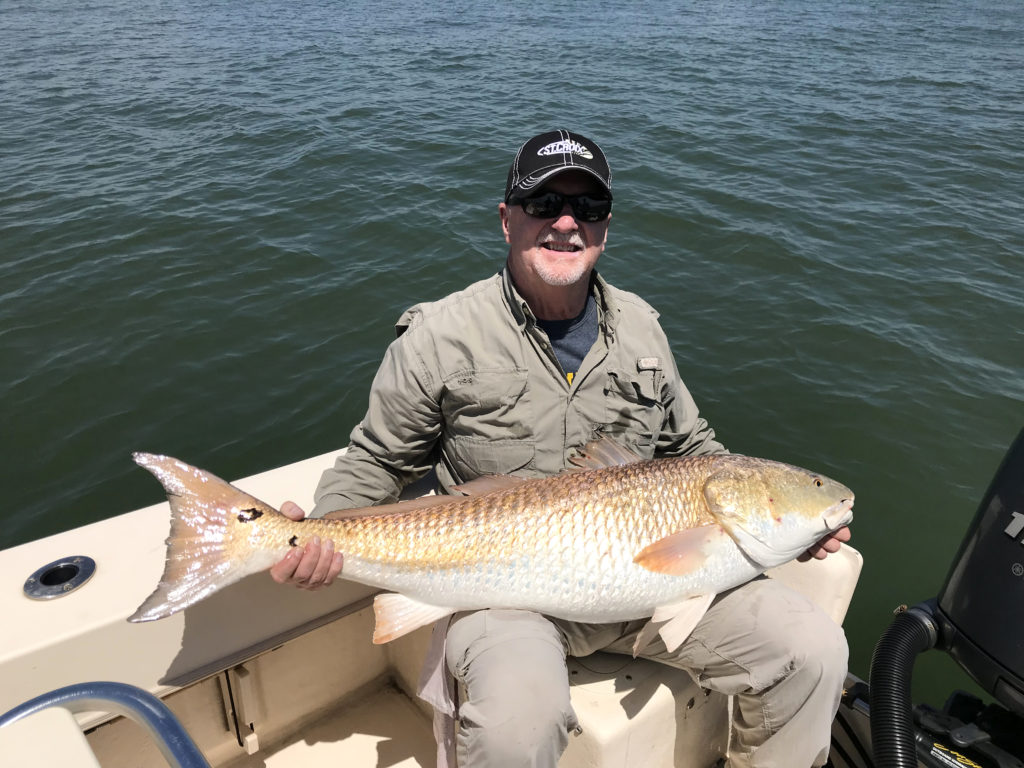
Photo by Kevin Josenhans
The spring fishery on the flats lasts only a few weeks before the big drum disperse up the Chesapeake, swimming regularly as far north as the mouth of the Choptank to provide more exciting catch-and-release action for anglers in both Virginia and Maryland before they head back to the ocean in October. The number of red drum release citations (for fish 46 inches or longer) issued by Virginia has grown to extraordinary proportions, 1,286 in 2021 and 1,086 in 2022. The big fish have become an important management success story, with three states (Virginia, North Carolina and Maryland) cooperating on their shared stock and anglers delighting in the encounters with them.
One friend from Annapolis, Crae Ramsey, fishes these shallow-water red drum with a Maryland guide who comes down to Virginia for a couple of weeks each spring. Crae now has several Virginia red drum citations to his credit. “It was obvious to me,” he says, summing up his feelings about these fish, “that rockfish were in trouble, and that the Maryland springtime Trophy Season can kill some. These red drum offer a great alternative. I love fishing a new area. It’s a great light tackle fishery with low release mortality, even though the weather requires prudence and patience. I can’t wait for May again this year.”
Editor-at-Large John Page Williams is a fishing guide, educator, author and naturalist, saving the Bay since 1973.

